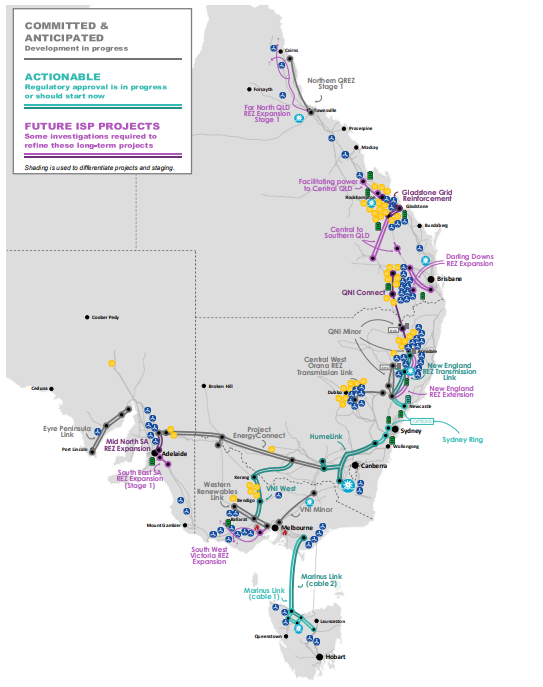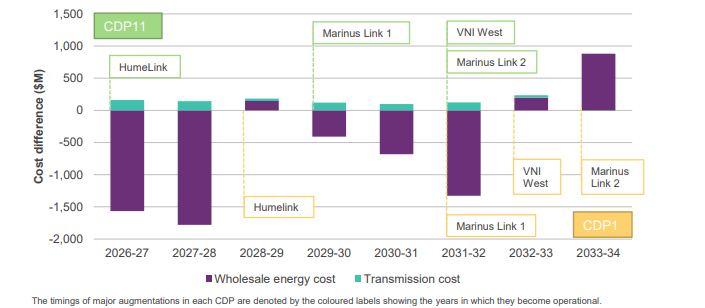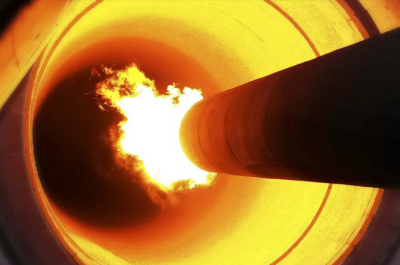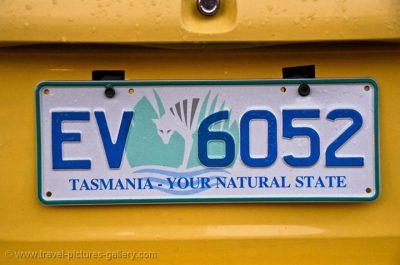Unpicking the 2022 Integrated System Plan
The Australian Energy Market Operator (AEMO) released the final 2022 Integrated System Plan (ISP) last week. The plan reconfirms the need to invest and build about 10,000km of new transmission, increase electrification, which without coal will require a nine-fold increase in large scale variable renewables and a five-fold increase in distributed solar. To balance the intermittent renewables and cater for the times when there is little wind and overcast/dark conditions – a phenomenon known as Dunkelflaute – there will be a need to treble the firming capacity. Firming capacity responds to dispatch signals such as hydro storage, large battery, gas generation and small virtual power plants behind consumers meters.
AEMO recognises the energy transformation is accelerating in Australia and globally. AEMO has had challenges operating the National Energy Market (NEM) over the past month with high gas and coal prices, supply issues and some generation offline for maintenance. Energy security for consumers is critical, with increased electrification of the economy it will become even more critical.
Diversification of location, the right energy mix and delivering enabling transmission is critical in this race to net zero.
The actionable and future ISP network projects are outlined in Fig 1 below.
Fig 1 Map of the network projects in the optimal development path[1]
The final 2022 ISP reconfirms the following five actionable projects:
- HumeLink actioned by Transgrid with a delivery date of 2026. This project is no longer subject to decision rules allowing Transgrid to refine costs and progress revenue and funding.
- VNI West is being managed by AEMO as the Victorian transmission planner with delivery by 2031. This project also has the decision rules removed but has yet to complete the regulatory investment processes which analyse various network options.
- Sydney Ring and New England Transmission Link are both due to be delivered by July 2027 and are managed by EnergyCo under the NSW framework. NSW Government has created a Transmission Acceleration Fund of $1.2 billion of revolving funds to enable EnergyCo to undertake early works and accelerate the delivery of NSW projects[2]
- MarinusLink cables 1 and 2 are due to be delivered July 2029 and July 2031. Marinus will need a decision on the recoverable revenue and also the allocation of costs to states benefiting to be able to reach a financial investment decision.
On a scenario-weighted basis these projects on the Optimal Development Path (ODP) deliver $28 billion of benefits, returning about 2.2 times their cost of about $12.7 billion. This represents just seven per cent of the total investment in the NEM to 2050 on storage, generation and network.
Key challenges remain for supply chains and resource availability, gaining and retaining the social licence to build infrastructure, financeability of projects and managing the power system to operate with 100 per cent instantaneous renewables by 2025.
While AEMO has stressed urgent action is required on five key transmission projects and it is important that regulatory approaches support the investment needed for the timely development of this infrastructure, unfortunately, aspects of the Australian Energy Regulator’s (AER) recently released draft Rate of Return Instrument will make this harder if they are approved.
In this environment, the new Commonwealth Government’s $20bn Rewiring the Nation Fund can help facilitate the financeability of major transmission projects, improve community benefits and support social licence. It is critical that all governments not only provide clear emissions trajectories for electrification of their state, but also support these essential transmission projects and facilitate timely planning approvals.
The AER has proposed a move from the normal regulatory and financing practice of using a 10-year bond rate for the assessment of returns on equity to a five-year rate. If this is implemented, it will reduce incentives for investment at a time when it has never been more important.
The insurance value of delivering transmission
The 2022 ISP is the first developed under the new actionable ISP rules. Fig 2 shows the relative costs and benefits of actioning the ISP projects or delaying under the step change scenario and indicates the insurance value of delivering early. When comparing two of the candidate development paths the additional costs of earlier transmission are far outweighed by the benefits in the reduced wholesale costs.
Fig 2 Average year on year distributional effects under step change[3]
So what’s next?
The table below outlines the preparatory work on future ISP projects which will be progressed over the next year and provide inputs to the draft 2024 ISP. Some projects in Queensland will have their prices escalated while others will require some preparatory activities to undertake preliminary design and costing. AEMO has not requested renewable energy zone (REZ) network design reports for some REZs due to the lack of clear support by state governments and the developing role of the state policy transmission frameworks. This has implications for the required level of stakeholder engagement and consultation over the next year.
However, should government support become clear between ISPs or in the next ISP, REZ design reports could be requested.
Table 1 Preparatory activities for some future ISP projects[4]
While AEMO has finalised the 2022 ISP, the development of the 2024 ISP timeline and early scenario development is already starting. It seems a given that the balkanisation of the NEM and the level of state planning and discretion is likely to increase, as will the complexity of delivering projects under these different frameworks.
Australia is not alone in needing to move its economy to lower emissions and build both generation and transmission. Supply chains will be stretched in what is an unprecedented level of infrastructure build globally. This ISP recognises the need to progress delivery of essential transmission as early as practicable.
Energy Networks Australia will continue to be actively engaged with our market bodies to improve transmission planning and regulatory investment frameworks to enable cost efficient and timely delivery of transmission projects.
[1] AEMO 2022 ISP Integrated System Plan, June 2022, p14
[2] Minister for Energy, NSW letter to AEMO CEO, 17 June 22
[3] AEMO Appendix 6 Cost benefit analysis, June, 2022, p84
[4] Ibid, p94




